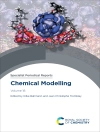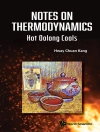Electric-field-mediated chemistry is an emerging topic that is rapidly growing and fanning out in many directions. It involves theoretical and experimental aspects, as well as intense interplay between them, including breakthrough achievements such as the proof-of-principle that a Diels–Alder reaction, which involves two simultaneous C–C bond making events, can be catalysed or inhibited simply by changing the direction of an oriented external-electric field (OEEF). This productive interplay between the theoretical and experimental branches of chemistry is continuing, and gradually defining a new sub-field wherein various sources of electric fields, whether external or built-in and designed, or even surface induced fields (plasmons), are brought to bear on chemical reactions, molecular structures, and nano-systems, leading to control of reactivity, selectivity, chirality, molecular orientations, changes in structure, and in dynamics.
Written by leaders in the field, Effects of Electric Fields on Structure and Reactivity is the first book on this exciting topic. Starting with an overview of the theory behind – and demonstrations of the effect of – electric fields on structure and reactivity, this accessible reference work aims to encourage those new to the field to consider harnessing these effects in their own work. Covering applications and recent theoretical developments, it is a useful resource for theoretical chemists and experimentalists alike.
Mục lục
Introduction;
The Impact of Electric Fields on Chemical Structure and Reactivity;
Experimentally Harnessing Electric Fields in Chemical Transformations;
Recent Advances in Designed Local Electric Fields;
Principles of Molecular Devices Operated by Electric Fields;
Computational Generation and Quantification of Electric Fields and Electrostatics-mediated Catalyst Optimization;
Electrostatic Fields in Biophysical Chemistry;
Molecular Dynamics in the Presence of External Electric Fields;
Manipulation of Molecules by Combined Permanent and Induced Dipole Forces;
Cavity-modified Chemistry: Towards Vacuum-field Catalysis;
An Introduction to Laser-fields Effects on Chemical Reactivity
Giới thiệu về tác giả
Sason Shaik (1948) received his Ph D degree with N.D. Epiotis at the University of Washington (Seattle). He did postdoctoral research with R. Hoffmann (Cornell), and then returned to Israel, where he directed for 20 years the Lise Meitner- Minerva Center for Computational Quantum Chemistry, and is currently a Saerree K. and Louis P. Fiedler Professor of Chemistry at the Hebrew University. His main interests are in bonding, chemical reactivity, metalloenzymes, and electric field effects in chemistry. Alongside a variety of computational tools, he uses valence bond theory as a conceptual frame, and has developed a number of new paradigms and concepts using this theory. His main recent awards are the Schrödinger Medal (WATOC 2007); the August-Wilhelm-von-Hofmann-Medal (the German Chemical Society, 2012); Membership in the International Academy of Quantum Molecular Science (2015); and The Gold Medal of the Israel Chemical Society (2017). He also writes essays on history, the chemical bond as the heartland of chemistry, and some poetry.
Thijs Stuyver (1992) received his Ph D degree under the supervision of Prof. Paul Geerlings, Prof. Frank De Proft and Dr. Stijn Fias at the Vrije Universiteit Brussel in 2018. He visited Roald Hoffmann’s group at Cornell University in 2016. As an FWO post-doctoral fellow, he is currently working with Prof. Sason Shaik at the Hebrew University of Jerusalem. His research interests involve electric field mediated chemistry, single-molecule electronics, diradical chemistry and valence bond theory.











